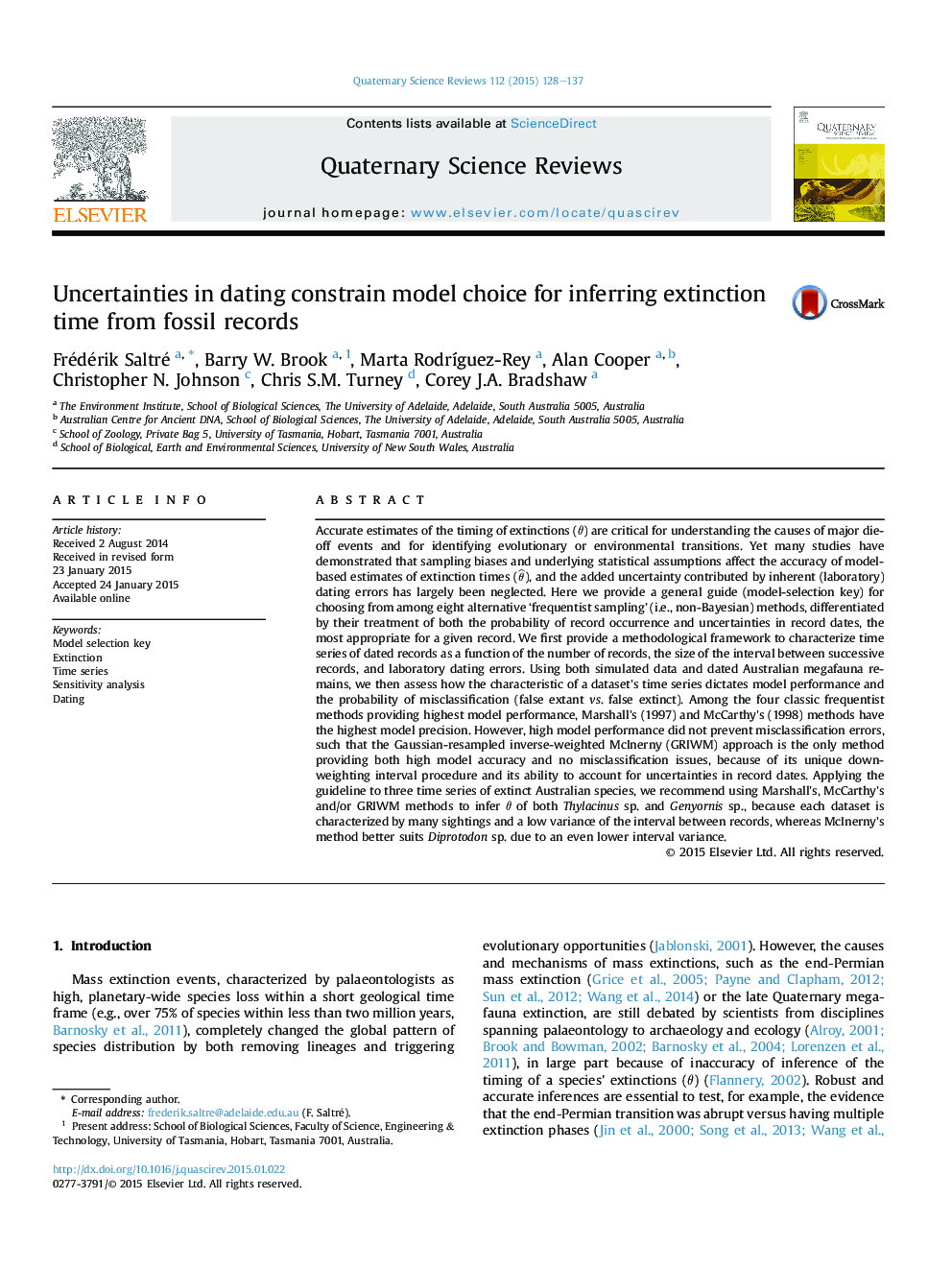| Article ID | Journal | Published Year | Pages | File Type |
|---|---|---|---|---|
| 6446398 | Quaternary Science Reviews | 2015 | 10 Pages |
Abstract
Accurate estimates of the timing of extinctions (θ) are critical for understanding the causes of major die-off events and for identifying evolutionary or environmental transitions. Yet many studies have demonstrated that sampling biases and underlying statistical assumptions affect the accuracy of model-based estimates of extinction times (θË), and the added uncertainty contributed by inherent (laboratory) dating errors has largely been neglected. Here we provide a general guide (model-selection key) for choosing from among eight alternative 'frequentist sampling' (i.e., non-Bayesian) methods, differentiated by their treatment of both the probability of record occurrence and uncertainties in record dates, the most appropriate for a given record. We first provide a methodological framework to characterize time series of dated records as a function of the number of records, the size of the interval between successive records, and laboratory dating errors. Using both simulated data and dated Australian megafauna remains, we then assess how the characteristic of a dataset's time series dictates model performance and the probability of misclassification (false extant vs. false extinct). Among the four classic frequentist methods providing highest model performance, Marshall's (1997) and McCarthy's (1998) methods have the highest model precision. However, high model performance did not prevent misclassification errors, such that the Gaussian-resampled inverse-weighted McInerny (GRIWM) approach is the only method providing both high model accuracy and no misclassification issues, because of its unique down-weighting interval procedure and its ability to account for uncertainties in record dates. Applying the guideline to three time series of extinct Australian species, we recommend using Marshall's, McCarthy's and/or GRIWM methods to infer θ of both Thylacinus sp. and Genyornis sp., because each dataset is characterized by many sightings and a low variance of the interval between records, whereas McInerny's method better suits Diprotodon sp. due to an even lower interval variance.
Related Topics
Physical Sciences and Engineering
Earth and Planetary Sciences
Geology
Authors
Frédérik Saltré, Barry W. Brook, Marta RodrÃguez-Rey, Alan Cooper, Christopher N. Johnson, Chris S.M. Turney, Corey J.A. Bradshaw,
